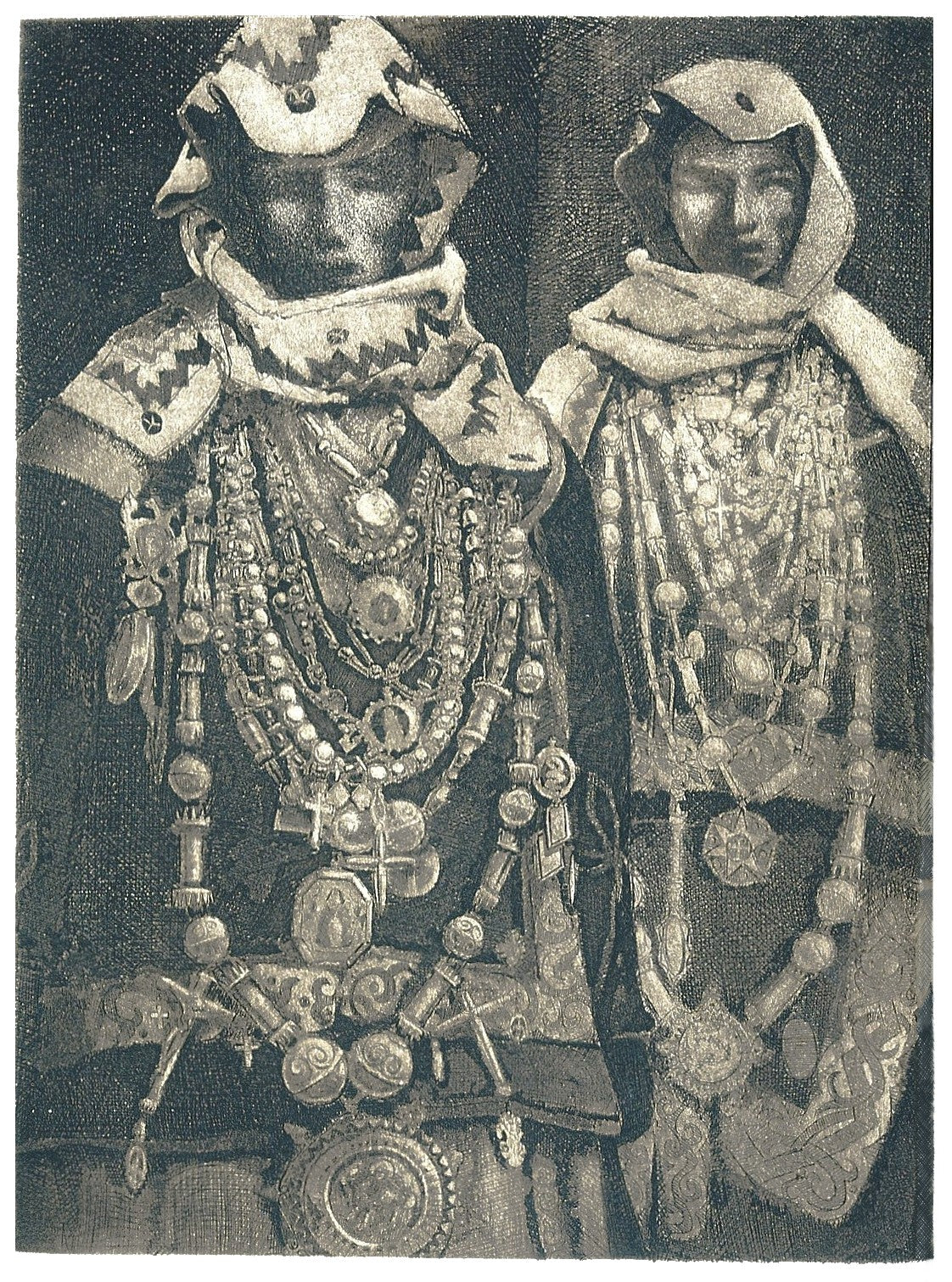Epic Trail Book Maps
The Wearing of Wealth
The Wearing of Wealth
Couldn't load pickup availability
Two women from the hill country—barefoot, proud—approached the market square where travelers came to barter not just for goods, but for stories, alliances, recognition.
Their adornment said everything before words could.
Necklaces—layered, heavy, and warm from the sun—glinted in the morning light. Not just jewelry, but testimony. Each link forged from ore drawn from ancestral mines. Each design rooted in myth. No two pieces were alike, and yet together they formed a grammar of wealth: a dialect of status, legacy, and territorial pride.
In those days, before the ink of laws began dividing ornament from offense, every member of the tribe could attempt such display. Blacksmiths worked for mothers and midwives, warriors and weavers alike. Jewelry was earned, gifted, displayed—not as arrogance, but as performance. It was a theatre of abundance, a way to say: Look, we have survived, we have prospered, we are sovereign.
The marketplace became a gallery of identity. To be adorned was not decadence—it was participation. A peacock does not apologize for its plumage.
But where spectacle thrives, hierarchy soon takes root.
As trade routes opened and foreign emissaries arrived—scribes in structured robes, governors with ledgers in hand—so too came discomfort. Not from the tribe, but from those watching. Their eyes did not see history in the gold—only power. They mistook parity for chaos. If anyone could dress like a leader, how would the people know whom to obey.
And so, the sumptuary laws came.
Simple at first: decrees about length, material, usage on holy days. Then more prescriptive: only elders may wear woven gold, only those with titles may wear three layers, only those above a certain lineage may wear the serpent motif. The display narrowed. The necks bore less.
The two women—who had once entered the square together, shining like river-light—still walked with grace. But now only one wore the necklaces. The other had sold hers to pay for a permit that granted her family access to the southern grazing lands. Still, she walked tall beside her companion. For though the ornaments had been taken from her body, the memory of their meaning clung to her skin.
And maybe one day, long after the laws faded and the ledgers crumbled, the people would remember that the true wealth of a nation was never stored in vaults—but worn, paraded, celebrated. As bold and unrepentant as a bird in full display, declaring simply, I am here. I belong, and look how I shine.
*This is a photo-copied print from an original etching. The description comes with it.
Share


